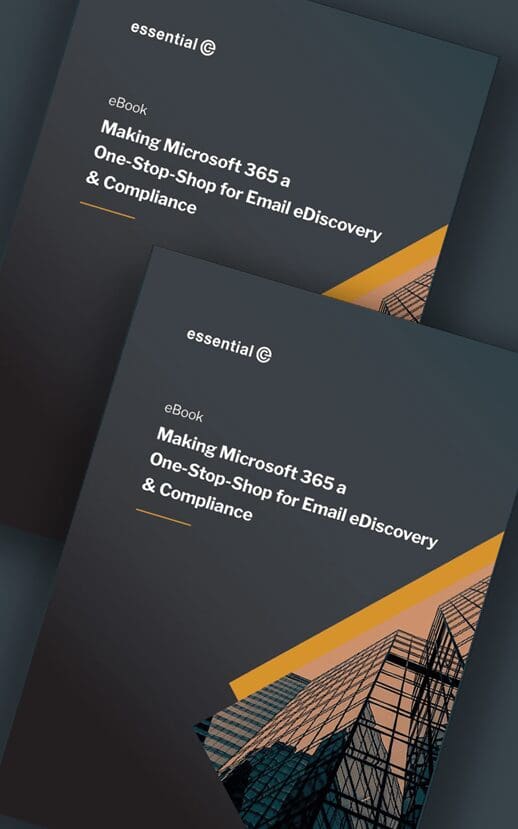Employee Engagement
Sustainable IT: Aligning Technology with Environmental and Business Goals
As more organisations set ambitious climate goals, sustainable IT has shifted from a ‘nice to have’ to a business imperative. Increasingly, we’re seeing partners and clients – especially those aligned with frameworks like JOSCAR (for aerospace, defence, and security customers) and G-Cloud (for public sector clients) – asking not just what we do to minimise environmental impact, but how we do it, and how we plan to evolve our practices to support their sustainability initiatives.
Essential has always been big on sustainability – it’s part of who we are. We’ve long believed that being a good business means doing good things: for our customers, our team, our local community, and the environment as a whole. So for us, embracing sustainable practices just makes sense.
But this shift isn’t just about paying lip service to looking ‘greener’, it’s also about making smarter decisions for the long run. Why? By integrating sustainable practices, businesses can lower costs, future-proof infrastructure, and meet stakeholder expectations (and attract the right people to work with).
In this article, we take a closer look at the environmental impact of tech, why sustainable IT makes good business sense, and what practical steps IT leaders can take to make real progress.
The Environmental Impact of Technology
Technology powers everything we do but it also comes with a growing environmental cost. The IT sector is responsible for around 2-3% of global greenhouse gas emissions and 4-6% of electricity use which is on par with the aviation industry. Data centres alone consume up to 1.3% of the world’s electricity, and in countries like Ireland, where server hubs are concentrated, the impact is even greater.
It’s not just energy use. E-waste is another major challenge. In 2022, the world produced 62 million tonnes of it, yet less than 25% was properly recycled.
In the UK, only a third of e-waste makes it into formal collection systems.
Discarded devices waste valuable resources and pose pollution risks, while the production of new equipment adds to emissions and material depletion. User devices alone account for around 60% of ICT energy consumption during use, and even more when you factor in manufacturing.

It’s not all doom, there’s good news here too. Efficiency gains in hardware and cooling, plus the shift to cloud and renewable energy, have helped stabilise data centre energy use despite increasing demand. But stability isn’t enough. As digital workloads grow, particularly with AI, emissions could rise again without further action.
IT has a significant environmental footprint, but it also could be part of the solution.
Why Sustainable IT Makes Business Sense
Energy Costs and Efficiency
Running IT infrastructure comes at a cost especially with energy prices fluctuating across Europe. If powering our houses over winter months causes our eyes to water, imagine what it costs to heat, cool and power the servers we rely on. Eye watering stuff, and certainly makes me think about more effective ways to manage what we’re using.
Reducing energy consumption in data centres and offices isn’t just good for the planet, it’s a clear way to cut overheads (and nothing gets an initiative off the ground, like a tangible cost saving). Moving on-prem workloads to efficient cloud platforms can lower energy use by up to 80%, directly reducing electricity bills.
Smarter code, server consolidation, and better system design all help you do more with fewer machines, lower costs, smaller footprint. A bit like turning the lights off whenever you leave the room, incremental changes add up to significant changes over time.
The same goes for office space. With hybrid working now the norm, many offices sit half empty – yet still consume full power. Without smart systems in place, that’s money and energy slipping through the cracks.
Regulatory Compliance and Risk Management
Environmental regulations are tightening, and IT is increasingly in the spotlight. In the EU, the new Corporate Sustainability Reporting Directive (CSRD) will soon require tens of thousands of companies to report detailed data including IT energy use and emissions. This will have a knock-on impact to the smaller organisations in their supply chains too in terms of reporting and disclosure.
The UK already mandates climate risk disclosures for large firms, with more specific tech regulations are coming, including transparency rules for data centres. Staying ahead of these changes isn’t just about ticking boxes, it’s common sense to avoid stress and disruption later down the line.
Talent Retention
A recent survey found that two-thirds of UK consumers prefer to buy from companies with environmentally friendly products. All things being equal, we want to do the right thing. Purpose as well as profit is driving the agenda for the generation emerging into the workforce, and quite right too.
Employees (especially younger talent) want to work for responsible, purpose-driven organisations. By demonstrating commitment to green IT, for example, running applications on renewable energy or using recycled materials in devices, companies can strengthen their brand, meet CSR goals, and build trust with their people, customers and investors.

Resilience and Future-Proofing
Sustainable IT practices often make your operations more robust and resilient. Energy-efficient systems generate less heat and face lower risk of overheating or failure, a critical point as we experience more extreme weather. (A record 40°C heatwave in the UK in 2022 forced some London data centres offline when cooling systems failed, disrupting services. Ouch.)
By investing in efficient cooling, renewable energy backups (like on-site solar or battery storage), and optimised software that can run under constrained resources, businesses ensure their IT can withstand power disruptions and climate-related stresses (and shouty execs baying for blood).

Green IT in Action: Case Studies
To understand how sustainable IT creates value, it helps to look at organisations already leading the way. Below we highlight three case studies of companies implementing green IT practices. and the benefits they’re reaping:
Equinix – Proving Green IT Can Scale
Equinix, one of the world’s largest data centre providers, has made sustainability central to how it operates. In 2023, it powered 96% of its global data centre operations with renewable energy, marking its sixth straight year above 90%. That puts it well on the way to its goal of becoming climate neutral by 2030.
Alongside switching to clean energy, Equinix is also investing in smarter, more efficient operations by cutting down waste heat, improving energy use, and even reusing excess heat to warm nearby buildings.
The business case is clear, lower costs, more stable energy prices, and a competitive edge with customers who care about sustainability. Plus, strong ESG performance continues to boost its reputation with both regulators and enterprise buyers, showing that even energy-intensive IT operations can align with climate goals and that going green can pay off in more ways than one.
Ebay: Using Virtualisation for Big Wins
By consolidating servers through virtualisation, eBay reduced data centre energy consumption by 78%, demonstrating how optimised infrastructure can yield substantial cost savings (eBay Tech Blog, 2021).
Peterborough City Council: Implementing Automated Shutdowns
Peterborough City Council adopted NightWatchman software to manage and reduce energy consumption across its IT infrastructure.
By automating the shutdown of idle computers, the council achieved significant energy savings and reduced carbon emissions, demonstrating the effectiveness of targeted IT energy management strategies.
See – the little things really do add up!

5 Practical Steps to Make IT More Sustainable
1. Move to More Efficient Cloud
Running on-prem servers often wastes energy. Moving workloads to efficient cloud platforms can cut energy use dramatically. In fact, studies show migrating to AWS can reduce carbon footprints by up to 80%.
2. Optimise What You Keep On-Prem
If – for whatever reason – you need to keep some or all of your services on-premises, you can still maximise your efficiency. Virtualise and consolidate your servers, and switch off what’s not in use (not just light switches). Auto-scaling, power management, and efficient software all help reduce waste. Encourage developers to build with sustainability in mind treating CPU time and memory as resources to be conserved, not consumed.
3. Choose Energy-Smart Hardware
When buying new kit, choosing eco-friendly laptops and accessories is a simple way to shrink your carbon footprint.
- Look for manufacturers that design their products with sustainability in mind, and, for example, use recycled materials and sustainable sourcing and ethical production practices.
- Go for energy-efficient options like servers with low idle draw.
- Opt for ENERGY STAR certified or Intel Evo products, which are designed to consume less power during daily use.
A sustainable procurement policy that seeks out these greener choices can help get everyone on the same page.
4. Have a Good Clean-out (and Bin off the ROT)
The impact of data hoarding on cloud storage growth is significant, but it can be managed, with good data management practices.
Actively applying retention policies, clearing out ROT and generally keeping a tidy data estate can have an impact both on storage costs, and the wider environment.
One of our customers made some significant changes by tackling out-of control SharePoint versioning, and saved thousands, as well as making hefty reductions in their cloud storage requirements.
5. Use IT to Reduce Building Energy Costs
Smart use of IT can play a key role in reducing energy consumption across office buildings. Workspace booking systems, for example, don’t just help manage desk and room usage – they also provide insights that allow facilities teams to make data-driven decisions about building operations. If occupancy levels are low, entire floors or zones can be closed off, reducing the need for heating, cooling, and lighting in unused areas. Meanwhile booking systems can be used to optimise occupancy in designated areas.
Meeting room technology can also be integrated with smart lighting systems. For instance, lighting and displays can automatically switch off when rooms are not booked, or adjust based on occupancy detected through booking platforms. These small changes add up – cutting energy waste, lowering operational costs, and helping organisations meet their sustainability goals.
“As well as creating some great new office spaces, by embracing a hybrid working model that embraces home working, and releasing under-used properties, we get to lower our carbon footprint and help direct more funds towards maintaining the UK’s waterways.”
Claire Skeels, National Facilities Manager, Canal & River Trust
Overcoming Common Concerns
It’s easy to assume that sustainable IT practices come with added cost, complexity, or disruption – but that’s not necessarily the case.
In fact, many of the perceived barriers are now easier than ever to overcome, thanks to improved tools, real-world success stories, and a growing ecosystem of support. Here’s how organisations are tackling the most common hurdles:
Lack of expertise: Many cloud providers and IT vendors now offer sustainability consulting, including Microsoft’s Sustainability Calculator for Azure, and handy Purview templates for CSRD reporting, which makes it easier to take some first steps.
Cost barriers: Google’s energy-efficient data centres saved over $1 billion in energy expenses. We’re not all Google- level, but this illustrates that taking the sustainable view pays back.
Implementation challenges: Starting with pilot projects such as virtualising non-critical workloads can show the benefits without large upfront investment.
In Summary
Sustainable IT isn’t a trend, it’s the right thing to do AND it’s going to save your organisation money. Win-win, right?
Aligning technology with environmental goals helps cut costs, manage risk and help your company appeal to the kind of people you want to attract, all while preparing your business for a future where sustainability will be expected, not optional.
The shift can feel big at first. But as noted in this article, even the smallest of businesses can start with small, practical steps: optimising energy use, extending device life, moving a few workloads to a greener platform, managing data volumes. These early wins build momentum and confidence.
And when IT leaders champion sustainability, it empowers teams to challenge assumptions and innovate, like asking whether that server really needs to run all night, or if that data needs to be stored forever (the answer is almost always, no!).
Sustainable IT is simply good IT: it helps you do more with less, and that’s always good business in my view.
Want to learn more about our learning & engagement solution for Microsoft 365?
Get in touch to arrange a chat or a demonstration.














